NCERT Solutions for Class 9 Economics Chapter 4 – Food Security in India
NCERT Solutions for Class 9 Economics Chapter 4 – Food Security in India are essential for understanding how India ensures availability, accessibility, and affordability of food to its population as per the CBSE curriculum. These well-structured answers help students grasp topics like the role of the Public Distribution System (PDS), buffer stock, and government programs. Designed as per the latest syllabus, these solutions strengthen conceptual clarity and improve exam preparation. Ideal for revision and practice, they highlight food-related policies and welfare initiatives, making them a valuable study tool for scoring well in Class 9 Social Science exams.
NCERT Solutions For Class 9 Economics – Food Security in India – Exercise Images
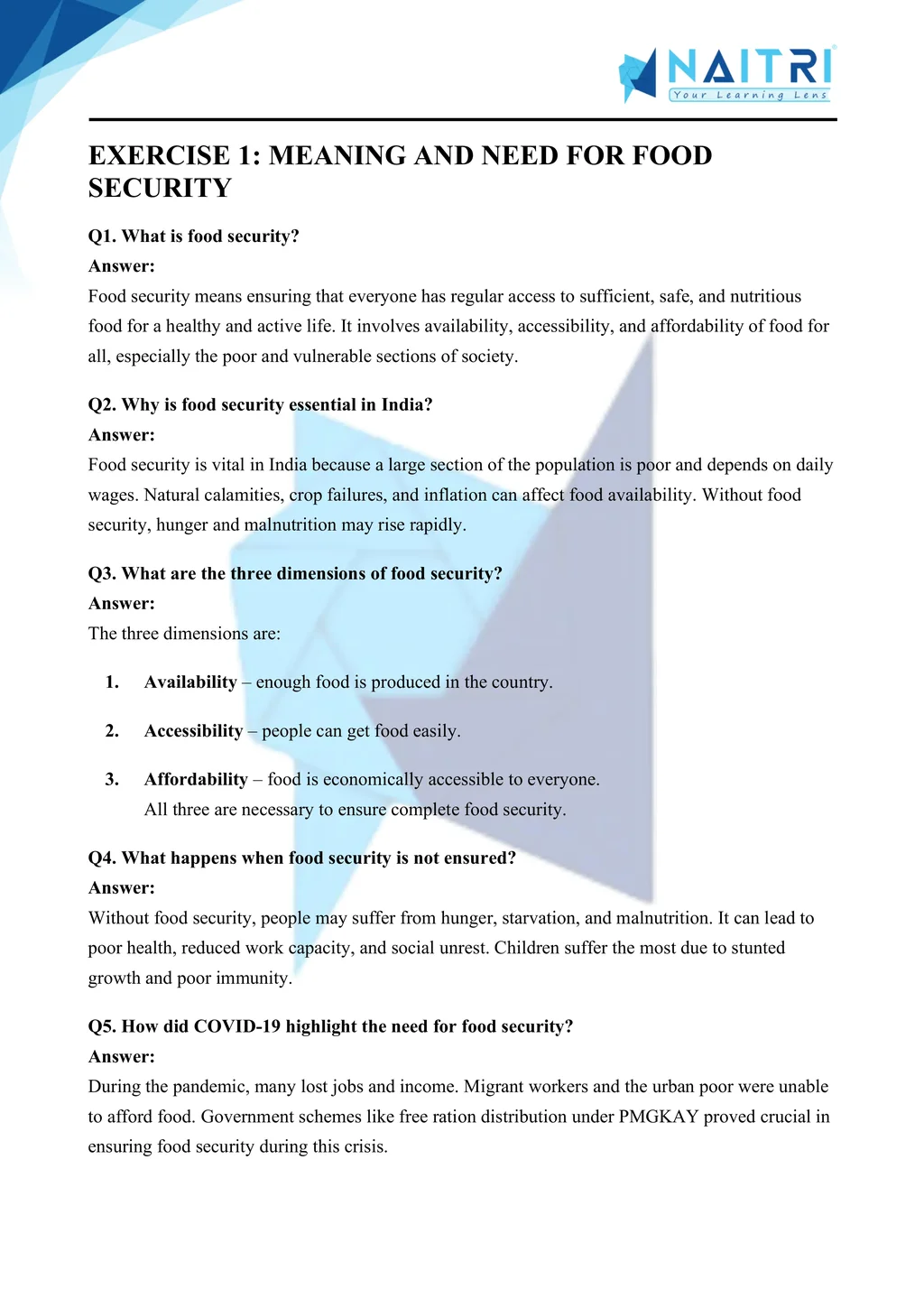
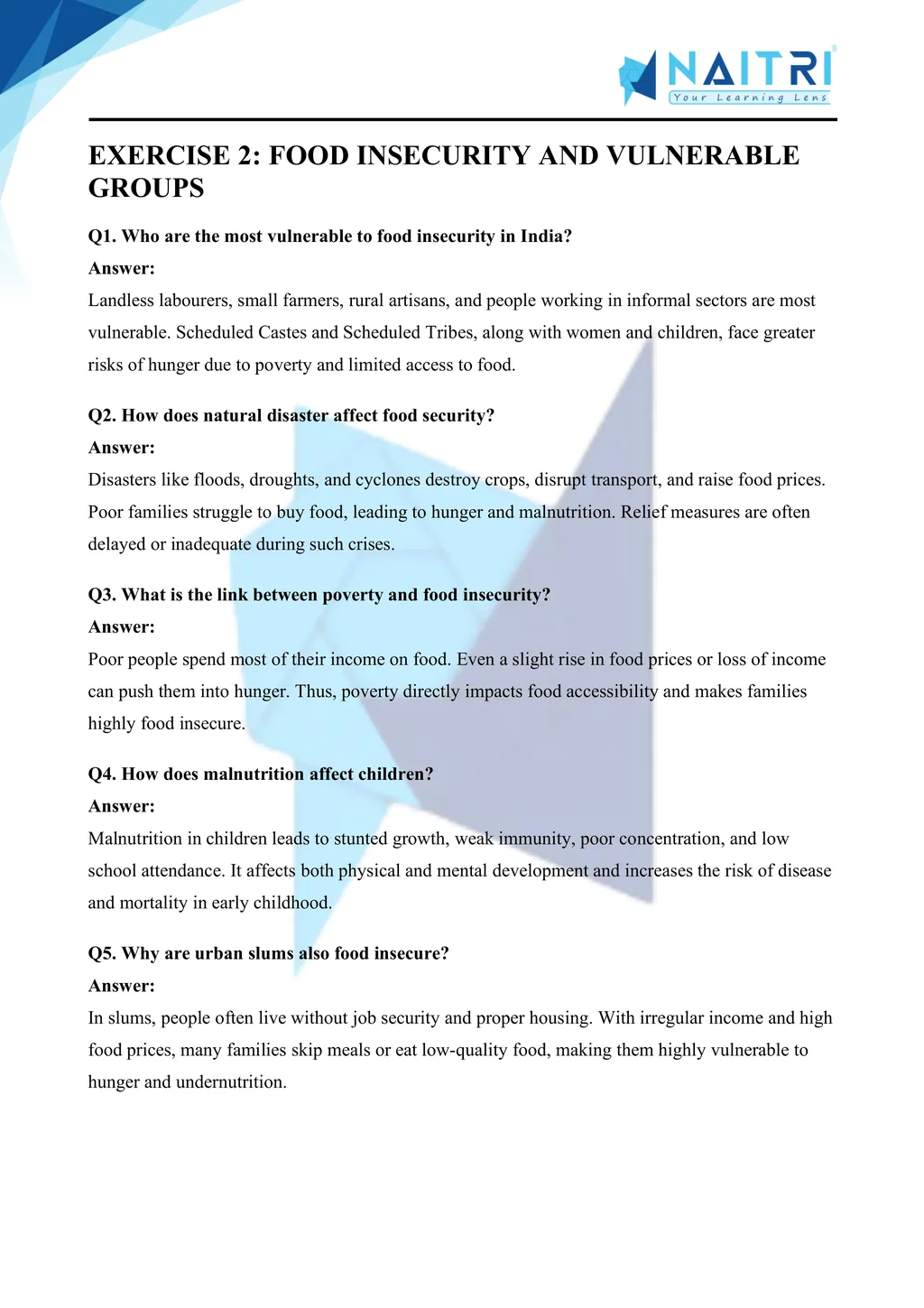
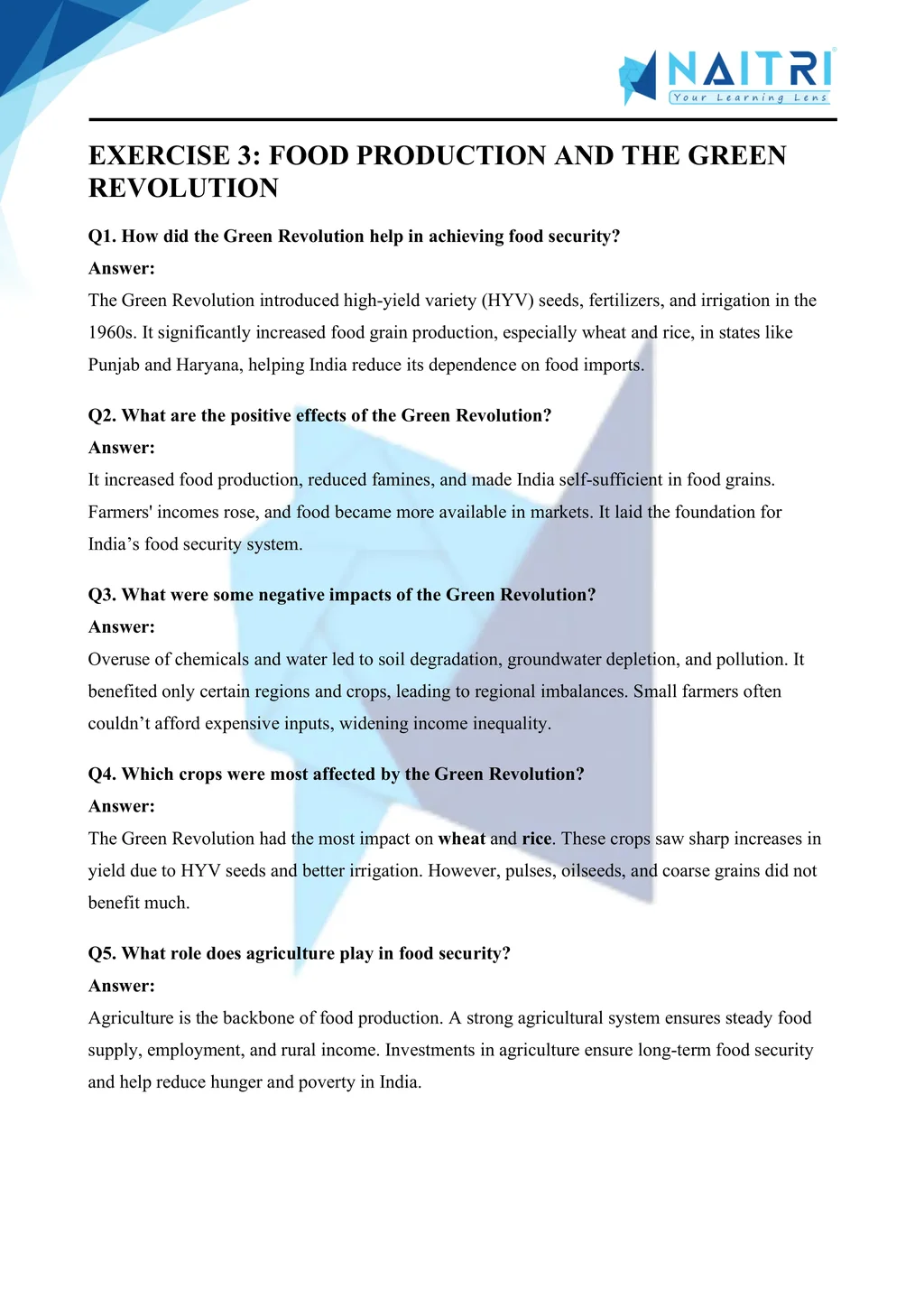
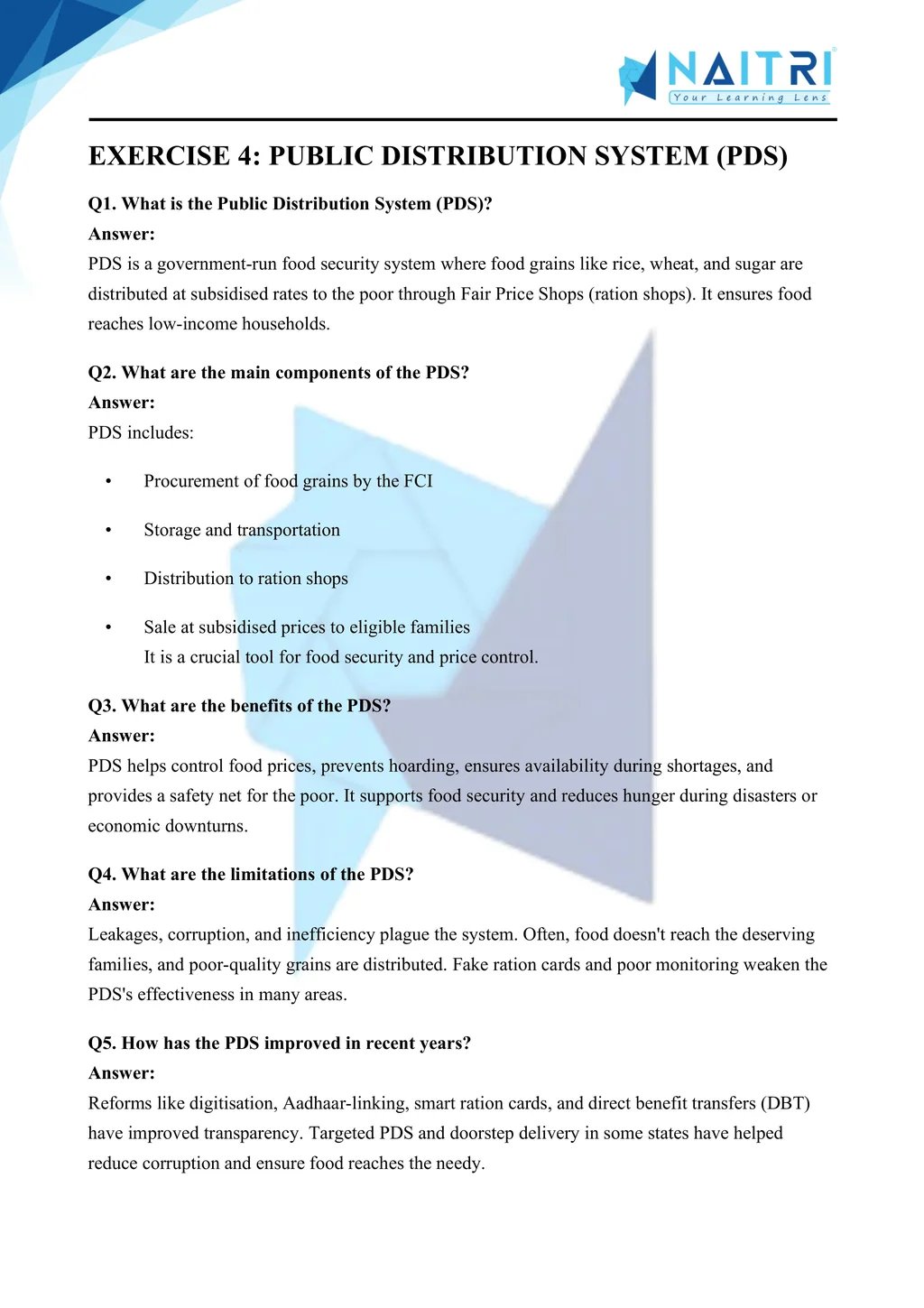
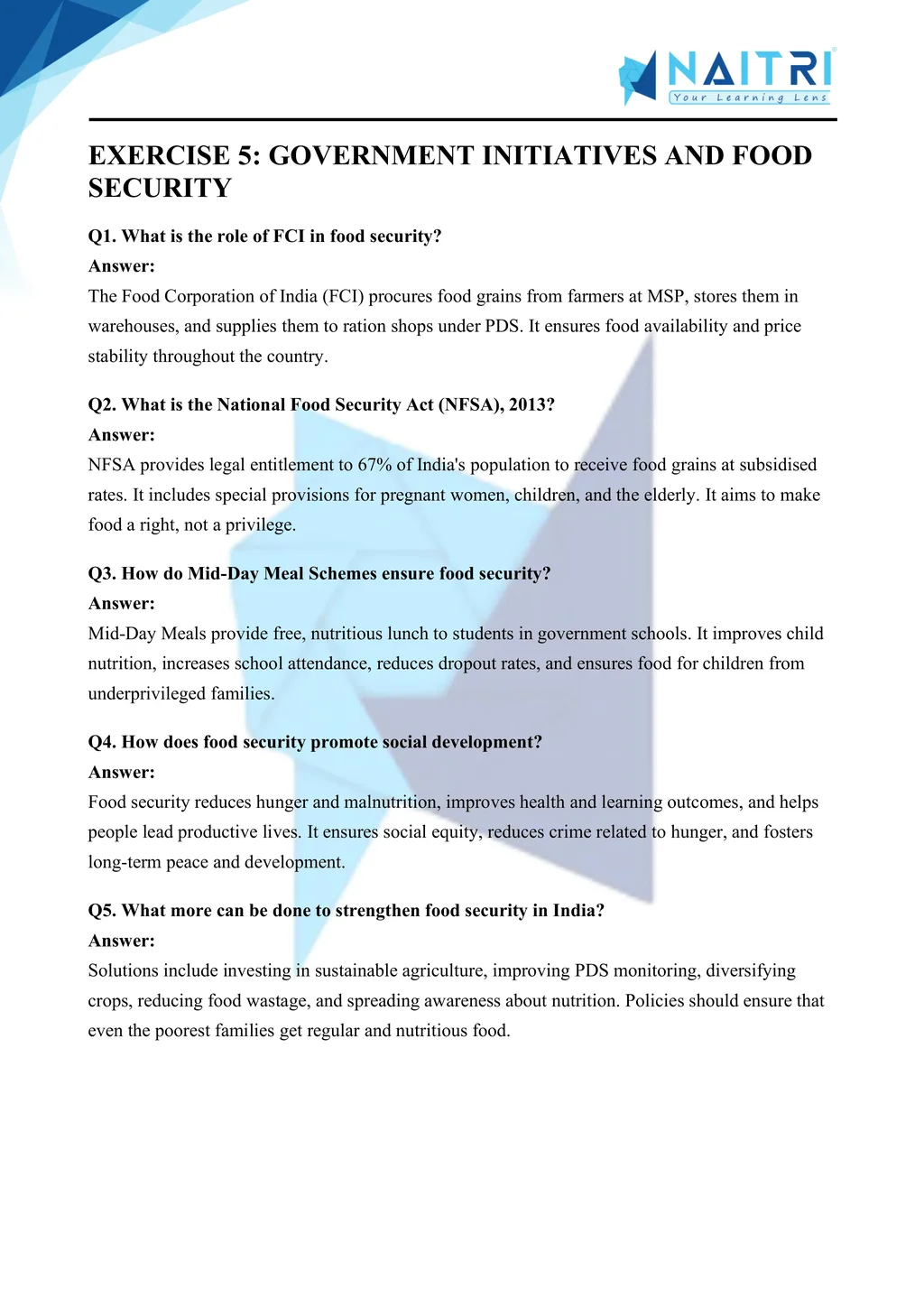
Experience Economics Like Never Before – With AR!
Understanding Food Security in India is now more exciting and immersive! With the NAITRI App, you can explore complex economics concepts through Augmented Reality (AR). Explore ration systems work, grain stocks move, and food distribution reach every corner — right in front of you. Our AR-powered lessons make learning interactive, 3D, and fun, helping you retain concepts better and enjoy every topic.



Visualize . Interact . Understand . The future of learning is here
Food Security in India – Important Questions with Answers
What is food security?
Answer: Food security means ensuring that all people at all times have access to sufficient, safe, and nutritious food to maintain a healthy and active life.Why is food security essential in India?
Answer: It is essential to prevent hunger, malnutrition, and starvation during disasters, crop failures, or economic hardships, especially for poor and vulnerable populations.What are the dimensions of food security?
Answer: The three dimensions are: availability of food, access to food, and affordability of food for all sections of society.Who are food-insecure people in India?
Answer: Poor households in rural and urban areas, marginal farmers, landless laborers, beggars, and victims of natural disasters are most food insecure.What causes food insecurity in India?
Answer: Major causes include poverty, unemployment, population growth, natural calamities, low agricultural productivity, and poor access to food distribution networks.What is the Public Distribution System (PDS)?
Answer: PDS is a government system that distributes subsidized food grains like rice, wheat, and sugar to Below Poverty Line (BPL) families through ration shops.What are Fair Price Shops?
Answer: These are government-authorized ration shops that sell essential commodities at subsidized prices under the Public Distribution System (PDS).How does PDS ensure food security?
Answer: PDS makes food affordable and accessible to the poor, prevents hoarding and black marketing, and stabilizes food supply during shortages.What are the types of ration cardholders in PDS?
Answer: Ration cardholders are classified into Antyodaya (poorest), BPL (Below Poverty Line), and APL (Above Poverty Line) based on income levels.What are the limitations of the PDS system?
Answer: Issues include corruption, poor quality of grains, leakage, fake ration cards, and inefficient delivery, reducing its impact on food security.What is buffer stock?
Answer: Buffer stock is the stock of food grains maintained by the Food Corporation of India (FCI) to ensure stability and food supply.How is buffer stock created?
Answer: The government purchases food grains from farmers at a Minimum Support Price (MSP) during harvest season and stores them for distribution.What is Minimum Support Price (MSP)?
Answer: MSP is the price at which the government guarantees to buy crops from farmers to ensure fair incomeand prevent distress selling.How does FCI help in food security?
Answer: FCI maintains buffer stock, procures grains at MSP, and supplies food through PDS to ensure a steady supply of essential items.What is the role of cooperatives in food security?
Answer: Cooperatives help distribute food at fair prices, support farmers with credit, and operate local storage and distribution centers, especially in villages.What are food-for-work programs?
Answer: These are government programs where poor people are given employment in public works in exchange for food or food-based wages.Name some government schemes for food security.
Answer: Important schemes include Antyodaya Anna Yojana (AAY), Mid-Day Meal Scheme, Annapurna Scheme, and Integrated Child Development Services (ICDS).What is Antyodaya Anna Yojana (AAY)?
Answer: AAY is a scheme targeting the poorest of the poor, offering food grains at highly subsidized prices through the PDS network.How does the Mid-Day Meal Scheme support food security?
Answer: It provides free cooked meals to children in schools, improving nutrition, encouraging school attendance, and reducing hunger among poor children.What is famine?
Answer: Famine is an extreme situation where there is acute food shortage, leading to mass starvation, deaths, and social collapse.What are the causes of famine?
Answer: Causes include crop failure, droughts, floods, war, or poor distribution systems, leading to a breakdown in the availability of food.What was the Bengal Famine of 1943?
Answer: The Bengal Famine killed over 30 lakh people due to crop failure, poor administration, and hoarding, highlighting the need for food security systems.Why is food security a human right?
Answer: Food is essential for life and dignity. Without adequate food, people cannot survive, making it a fundamental human right recognized globally.How is nutrition related to food security?
Answer: Nutrition ensures balanced diet and health, and food security must include not just food quantity, but quality and diversity for well-being.Summarise the importance of food security in India.
Answer: Food security is vital to prevent hunger, reduce poverty, ensure health, and maintain economic stabilityby supporting vulnerable groups with timely food access.
Food Security in India explains the need for ensuring access to sufficient, safe, and nutritious food for all. It discusses the causes of food insecurity, the role of the Public Distribution System (PDS), and government initiatives like buffer stock and rationing. Real-life examples, especially of vulnerable groups, are used to illustrate the importance of food security in a developing country like India. The chapter promotes awareness about hunger, distribution systems, and policy responses.
Related Chapters You May Like
Download Naitri App
Easy, Visual Learning — Right on Your Phone
Learn with Augmented Reality! The Naitri app makes CBSE and MP Board concepts interactive and fun — even in low-resource settings. Watch lessons, complete homework, take tests, and track progress — all in one place. Anytime. Anywhere.
Available on








